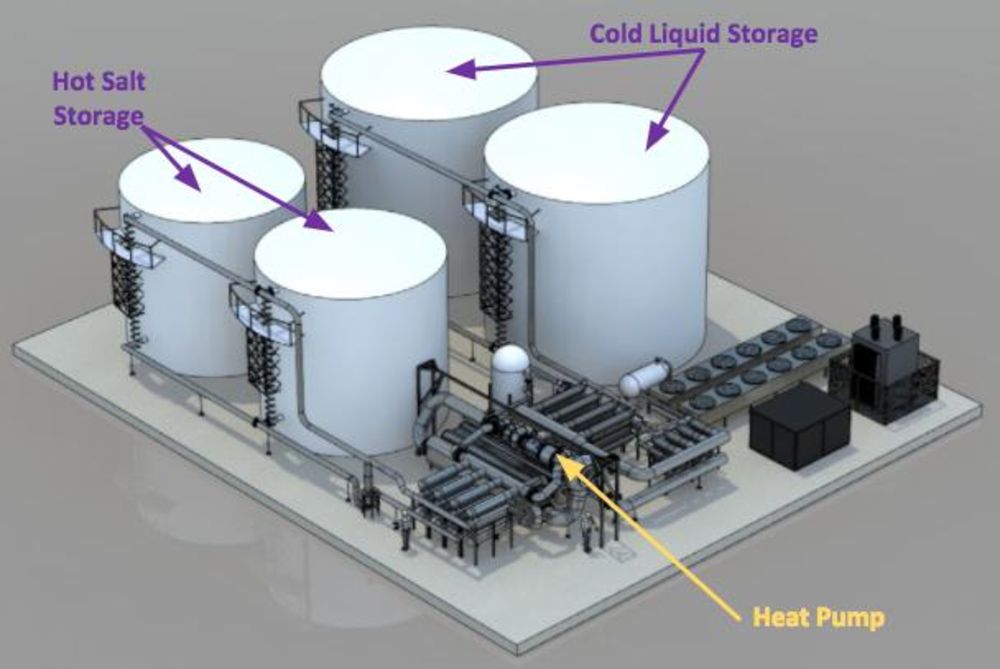By Warren Miller, contributing writer
Storing renewable energy may be the last frontier on our journey to being completely free of our reliance on fossil fuels, and researchers at Alphabet’s renowned X lab may be on their way to developing a new technique that could be more efficient and cost-effective than anything we’ve seen to date.
The system they’re developing consists of four cylindrical tanks, two filled with salt and two filled with antifreeze. Incoming electricity runs a heat pump that simultaneously heats the salt and cools the antifreeze to store the energy. When it’s time to retrieve the stored energy, the salt and antifreeze create two currents of hot and cold air, respectively, that power a jet-engine-like turbine to generate electricity. Salt can maintain high temperatures for hours or even days if the vessel that it’s contained in is properly insulated, so the surplus renewable energy can be stored for quite some time.
Similar technology has proven capable of storing renewable energy before, but the Alphabet research team has discovered a way to keep the operating temperature of the system much lower than previous versions. The lower temperatures reduce the need for expensive ceramics or steels in construction of the tanks and equipment.
Finding new and reliable ways to store energy is the key to maximizing the amount of energy we can produce. The state of California lost over 300,000 megawatts of energy produced by solar panels and wind farms in the first six months of 2017 because it couldn’t be easily stored, according to Bloomberg News Energy Finance. In 2015, Germany lost 4% of its self-produced wind energy. China might lose as much as 17% of all the renewable energy it creates per year, according to some reports, if it doesn’t have an efficient method of energy storage.

A representation of Malta’s grid-scale energy storage technology. Image source: X.
Large energy storage sites, using battery or other technologies, could help fill this storage gap, but these installations can be costly and may not be easily utilized to deliver energy where and when it’s required. The entire electrical infrastructure may need to be modified to allow a centralized storage system to deliver excess energy efficiently. Perhaps a distributed system of storage at the level of a campus, building, or home would work better, putting the energy where it can be used most easily and efficiently.
When will this potential breakthrough make an impact on our daily lives? Not anytime soon, unfortunately. The prices of other energy storage technologies like lithium-ion batteries are falling, and investors may be loath to direct resources to a product that may still be a few years away from competing in the global marketplace. Alphabet’s spotty track record in the field of clean energy isn’t helping their cause, either; they’re primarily known for developing Google’s line of driverless cars.
Still, the market is there, with Bloomberg estimating a potential $40 billion in investments in the field by 2024. If the market really develops and this approach to energy storage takes off, all Alphabet has to do is figure out where to store all their profits.
Advertisement
Learn more about Electronic Products Magazine





